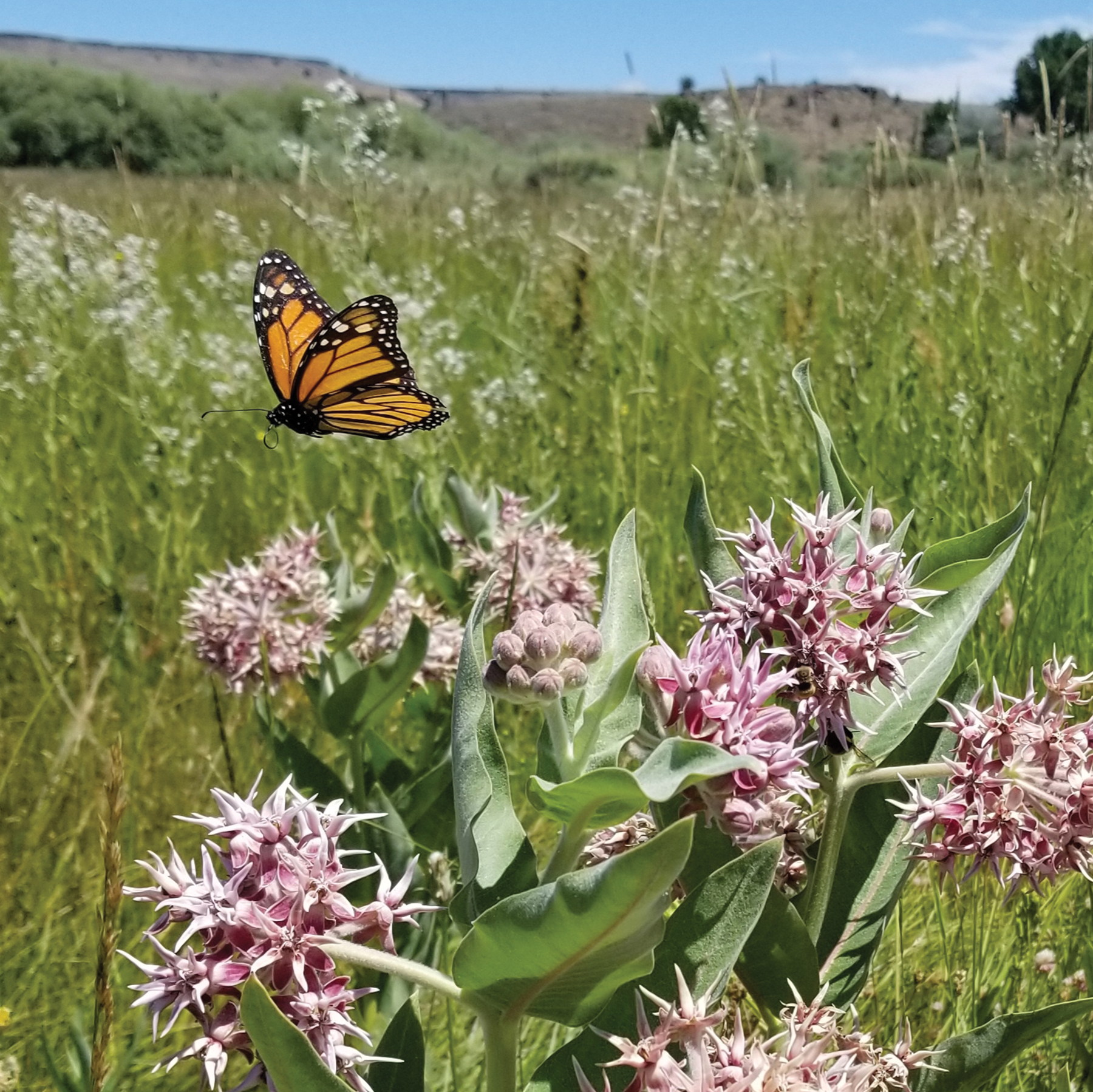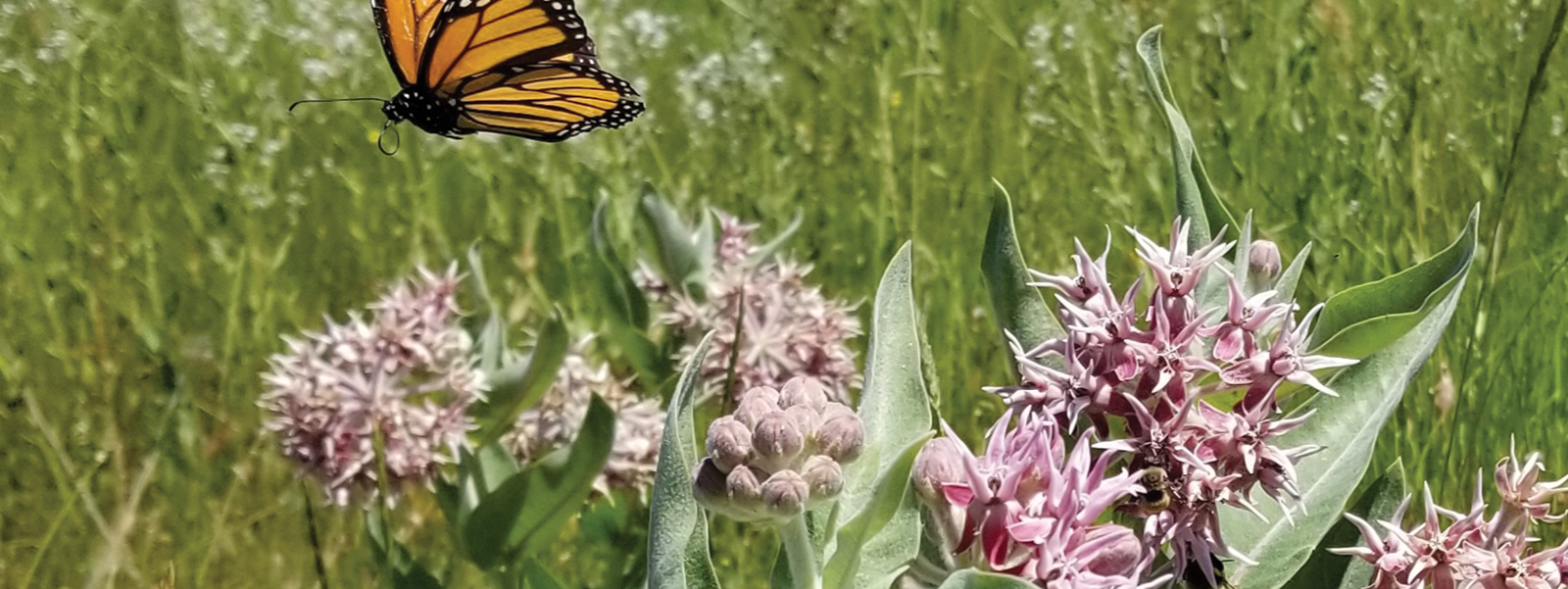Federal officials weigh ESA listing for monarch butterfly

The U.S. Fish and Wildlife Service is considering whether to list the monarch butterfly as threatened or endangered, which could have land-use implications for farmers.
Photo/Xerces Society/Stephanie McKnight

By Christine Souza
The iconic monarch butterfly—famed for its vibrant orange and black wings—makes its annual stop along California’s Central Coast this month to overwinter. This journey is part of a multigeneration migration that spans North America, with monarchs traveling as far as Mexico and Canada.
But their numbers have dwindled.
Chip Taylor, founding director of Monarch Watch, said monarch butterflies are affected by hot weather.
“The modest climates that they have been relying on are going to be disappearing,” he said. “Their habitat is going to be narrowed, and their population is probably going to decline significantly over the next couple of decades.”
Taylor discussed the plight of the monarch butterfly during an Oct. 8 webinar, which included a discussion on how a potential action to list the monarch as threatened or endangered under the U.S. Endangered Species Act would affect California farmers and ranchers. The session was led by Western Growers, the California Farm Bureau and the California Association of Pest Control Advisers.
A January count by the Xerces Society revealed that 233,394 western monarchs overwintered in California this year, down from 330,000 monarchs observed in 2023. Today’s population is 5% of what it was in the 1980s, the Xerces Society reported.
Monarch populations have declined due to loss of habitat such as areas with native milkweed, which the species depend on for food and reproduction.
The U.S. Fish and Wildlife Service has until Dec. 4 to submit a proposed rule on whether to list the monarch.
Brigit Rollins, staff attorney for the National Agricultural Law Center, said the agency is required to act as part of a settlement agreement stemming from litigation between the agency and environmental groups.
“Once a species is listed under the ESA as endangered, it automatically gets granted all the protections the ESA has to offer,” Rollins said. That means it will be an ESA violation to “take,” or kill, the species.
A federal monarch listing could affect farmers by limiting use of crop protection materials to protect the butterflies from pesticide exposure and use of property, should it be designated as critical habitat for the species.
“Should the species get listed, especially if it’s listed as endangered, this prohibition on ‘take’ is going to kick in immediately,” Rollins said, adding that a listing would impact potential harm of species through regular, routine use of herbicides or insecticides.
A designation of critical habitat, she said, would affect farmers in cases in which there is a federal nexus, such as working with a federal agency to acquire a permit, receiving grant funding or working on a project.
“This is where the critical habitat rubber is going to meet the road because that agency must ensure that whatever action it is they are doing in participation with you will not cause destruction of critical habitat,” Rollins said.
Kari Fisher, senior counsel for the California Farm Bureau, said many farmers have voluntarily created monarch habitat on their farms.
“There is a concern for those growers that already have put in milkweed, hedgerows or other plants that if the monarch is listed and there is an accidental ‘take,’ that they would be held liable for a violation of the ESA,” Fisher said. In addition, she said, landowners who do certain practices on their property to help a species may also receive “take” protection through a conservation benefit agreement.
To reduce pesticide exposure to listed species, the EPA released an updated work plan that discusses how it will pursue protections for listed species, such as during review of pesticide registrations. The plan also incorporates an action plan for vulnerable species, or species with the greatest risk of pesticide exposure.
Representing farmers and ranchers on the Central Coast, Norm Groot, executive director of the Monterey County Farm Bureau, said with the monarch’s overwintering habitat in Pacific Grove, farmers are concerned.
“What we need to watch out for is how extensive a critical habitat designation is going to be and whether or not that’s going to include rangeland and what that means for grazing cattle and maintenance of milkweed species on that rangeland,” Groot said. “The other concern is if hedgerows would be required around ag fields to support milkweed, which is a food safety issue, as it becomes habitat for insects and rodents.”
Groot said farmers and landowners affected by a potential listing of the monarch butterfly are looking for a balanced solution that protects the species and their right to farm. He cited the greater sage-grouse as an effective example of farm landowners working with agencies and nonprofits to protect a listed species.
If the Fish and Wildlife Service issues a decision to list the monarch butterfly under the ESA by Dec. 4, a public comment period will be announced, and a final decision will be issued. Once the decision is finalized, the prohibition on “take” goes into effect.
(Christine Souza is an assistant editor of Ag Alert. She may be contacted at csouza@cfbf.com.)




